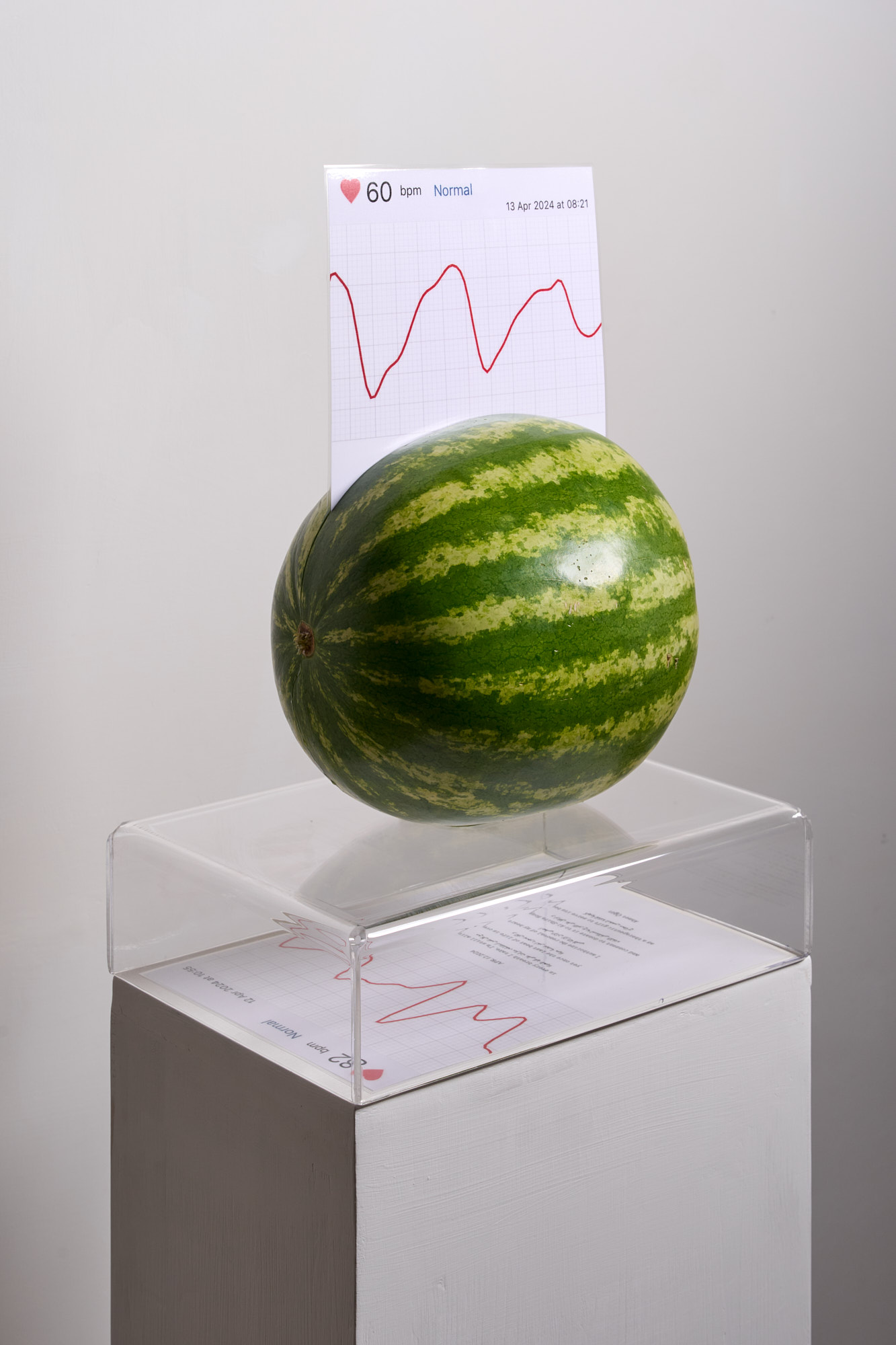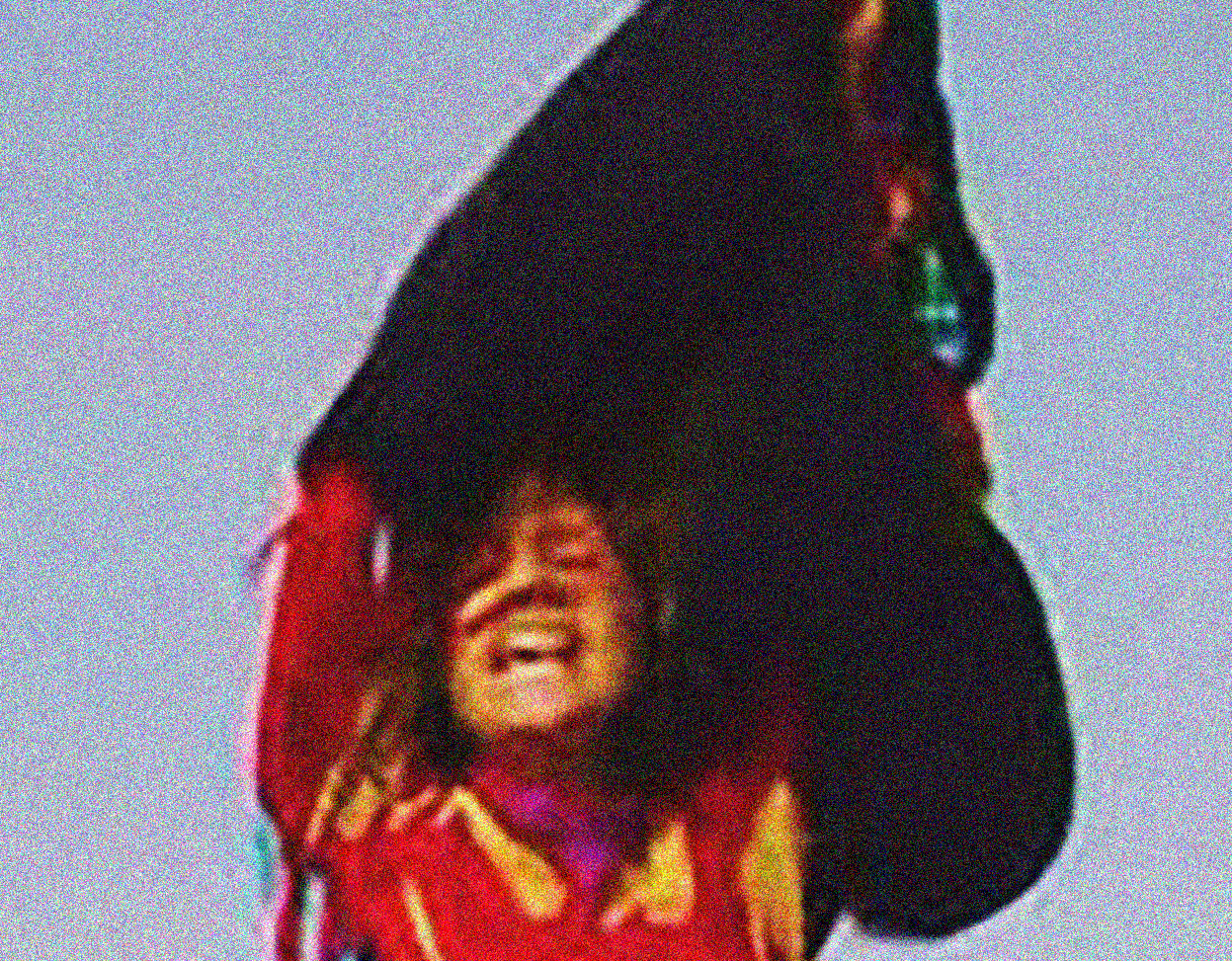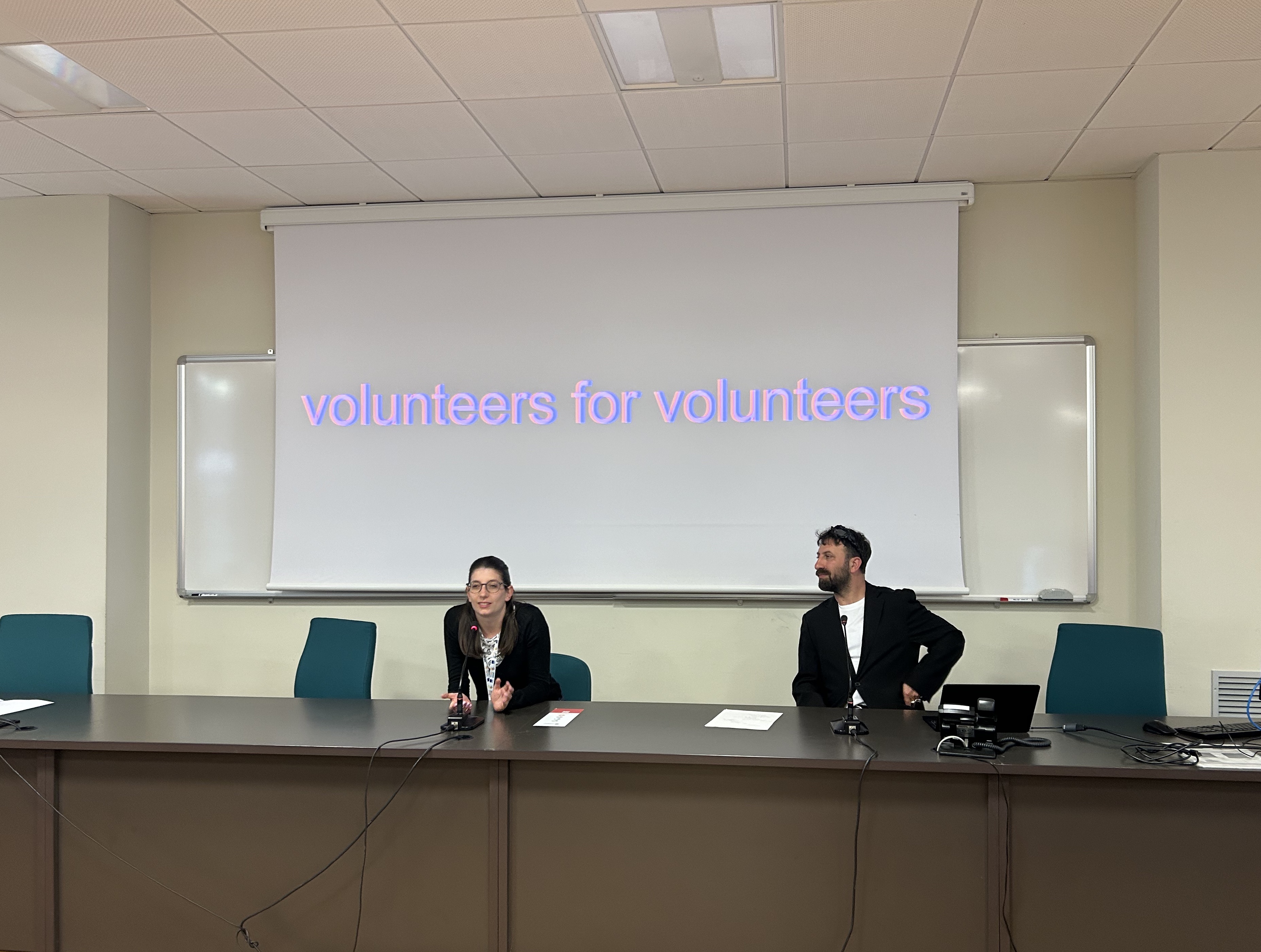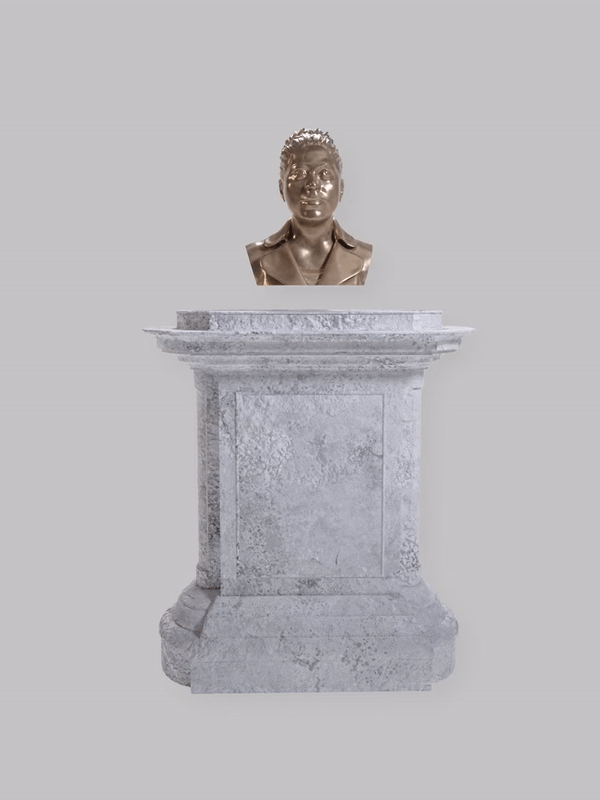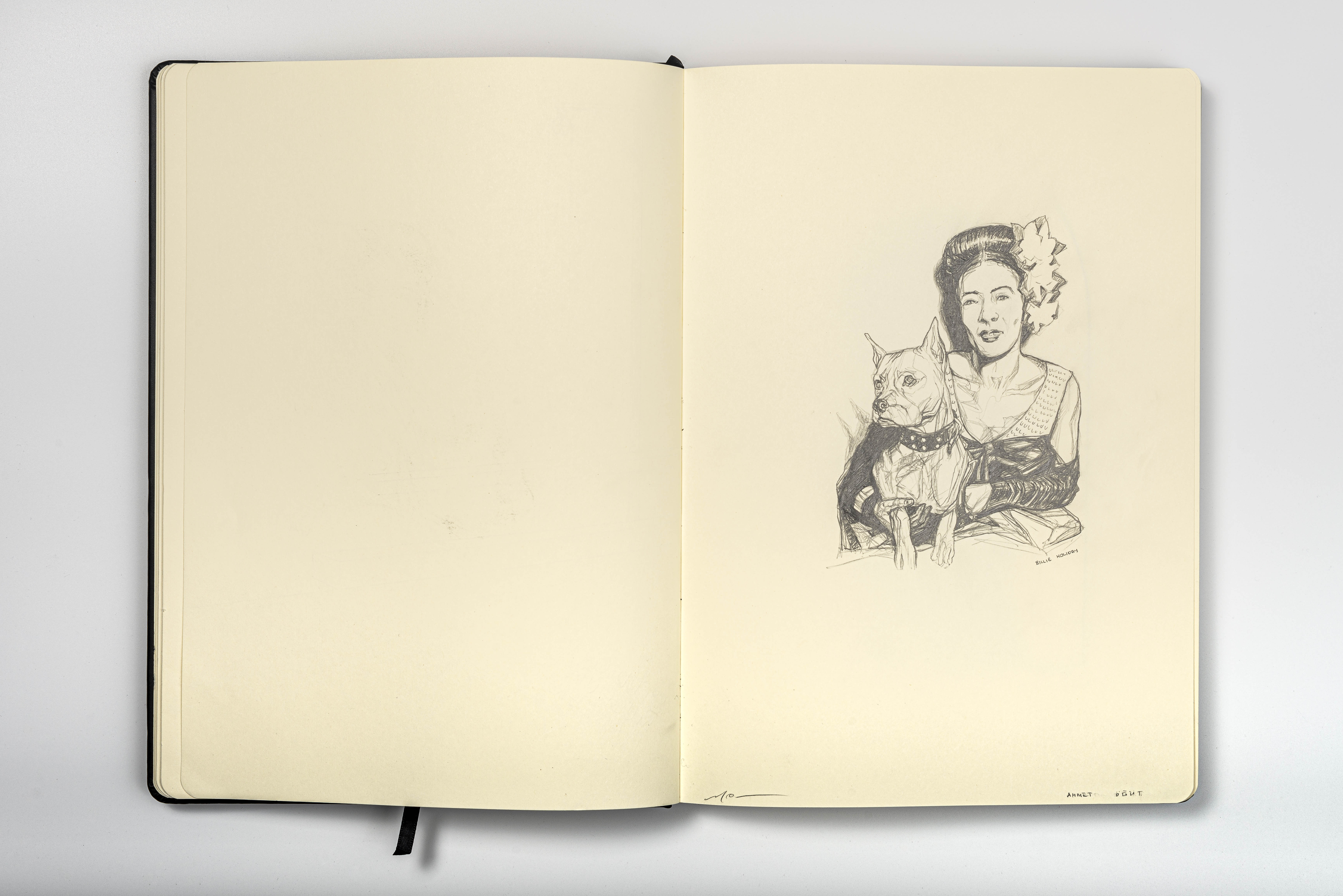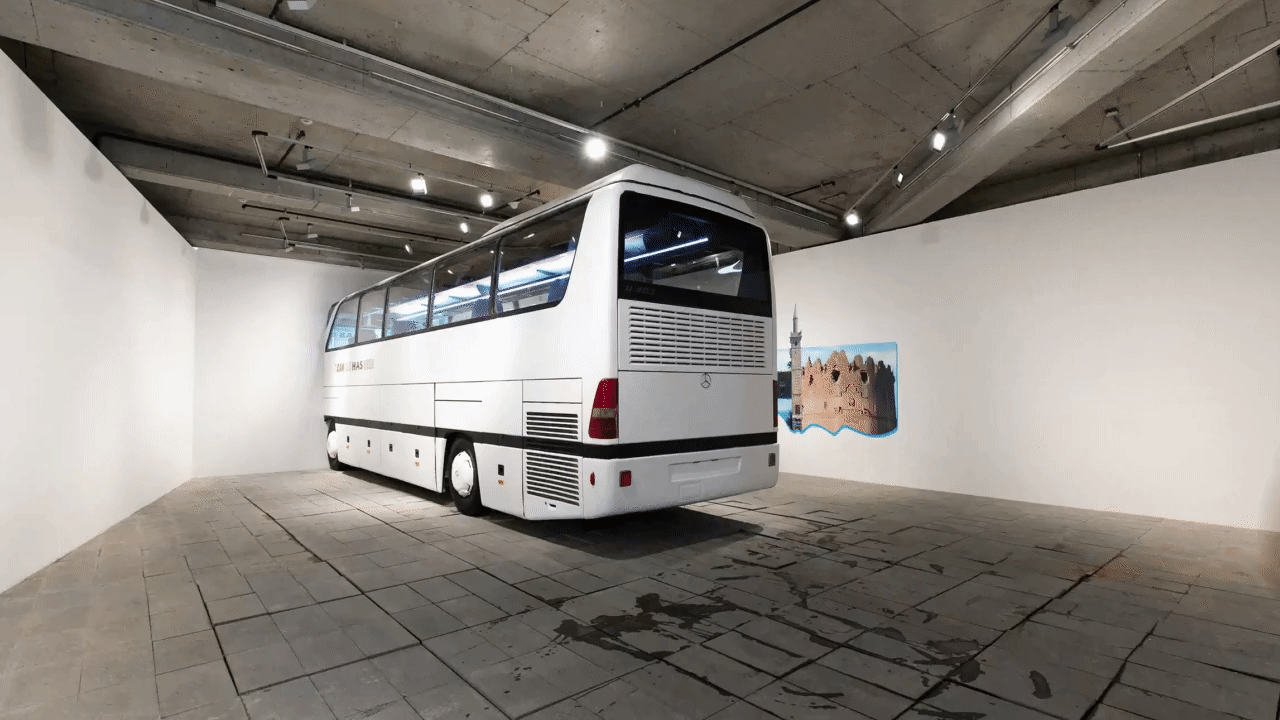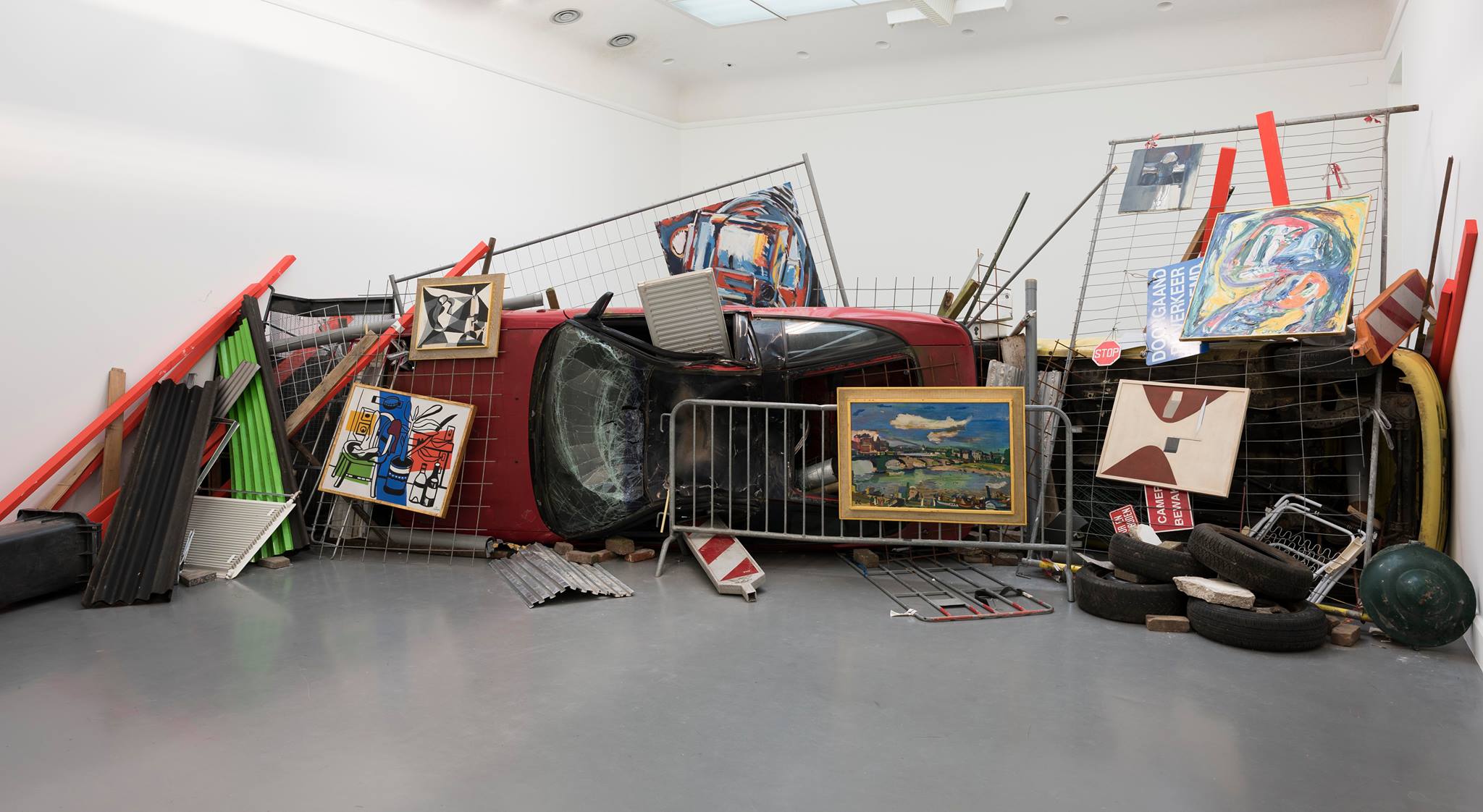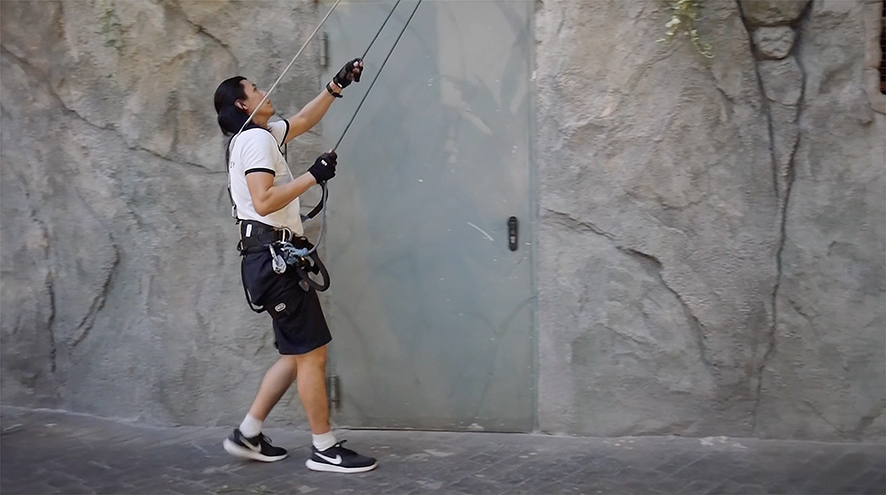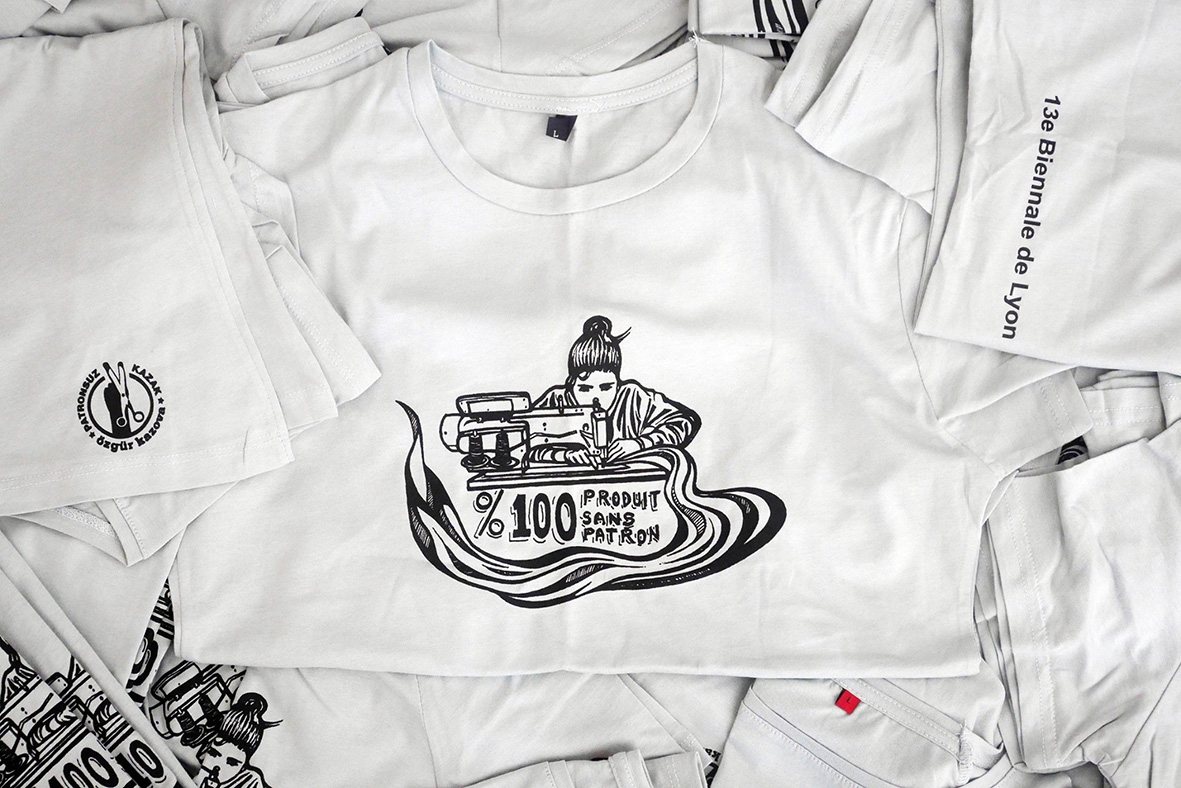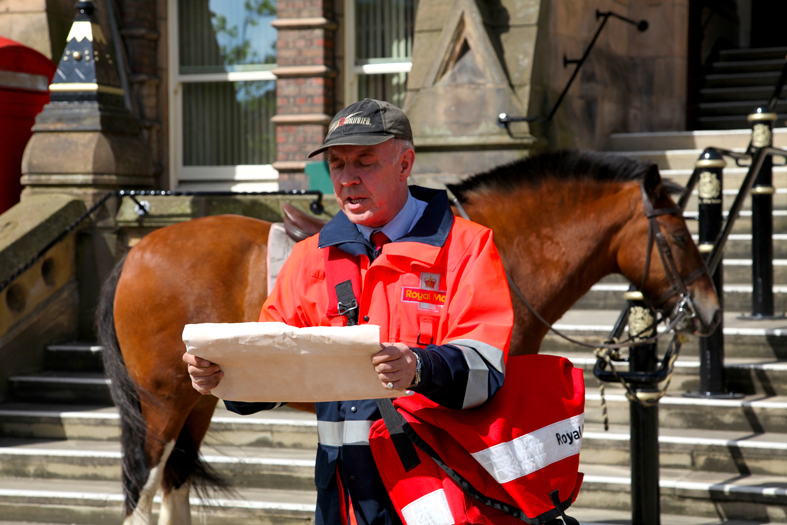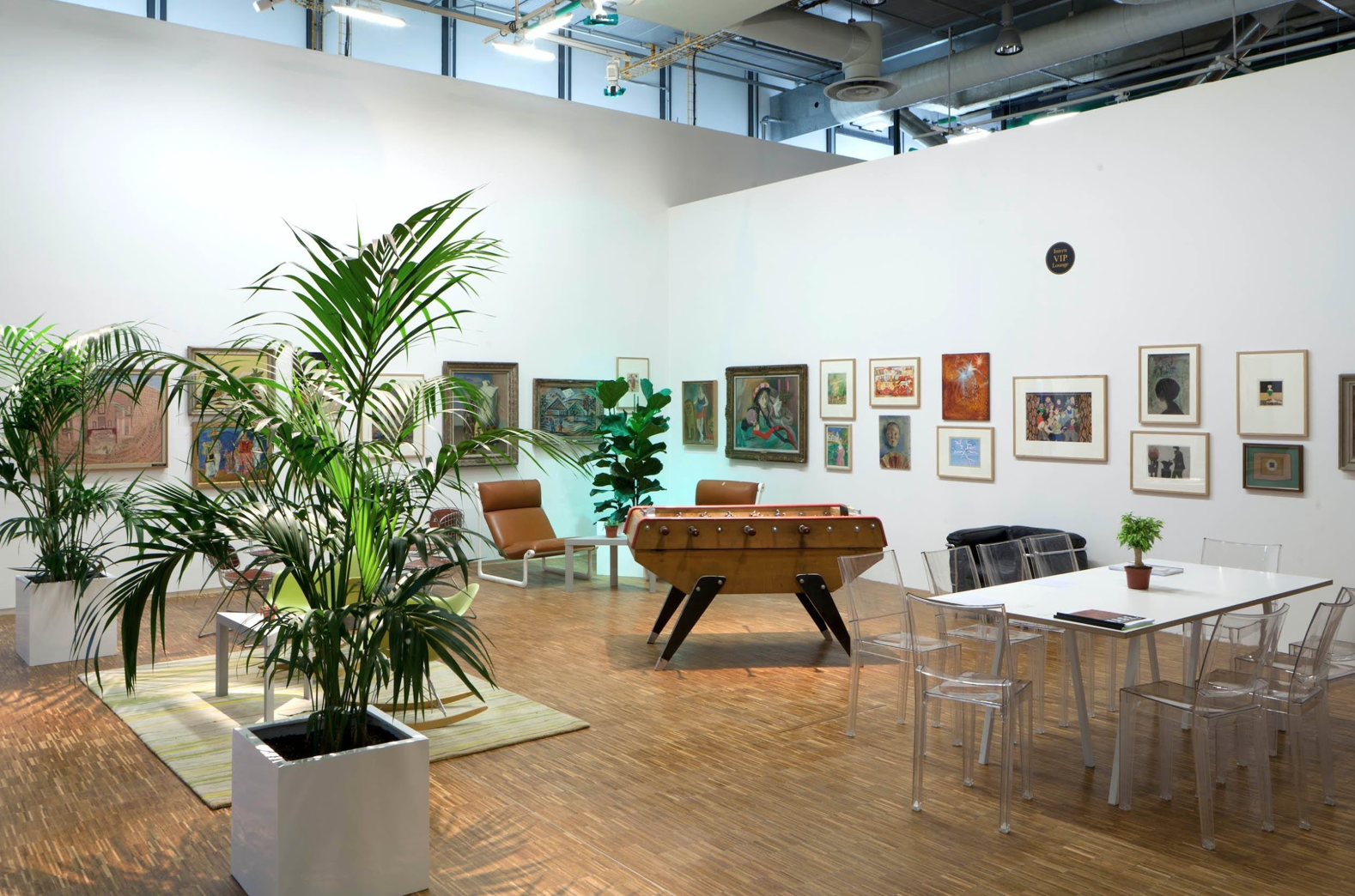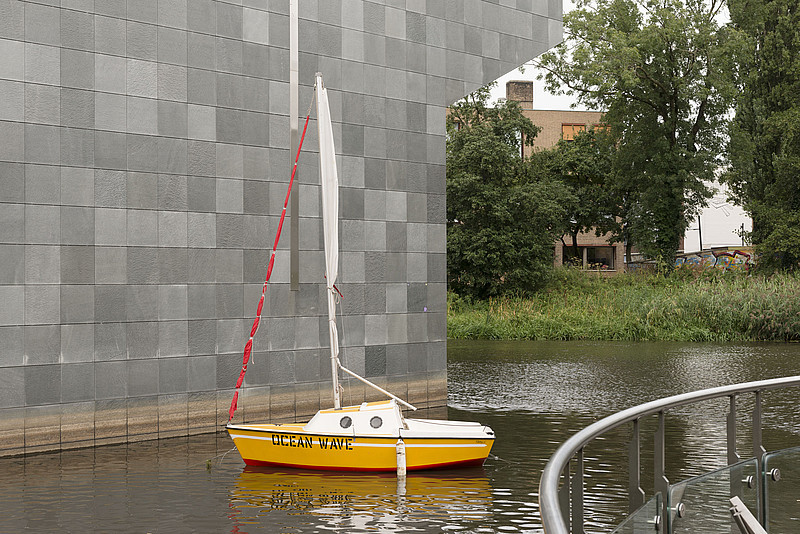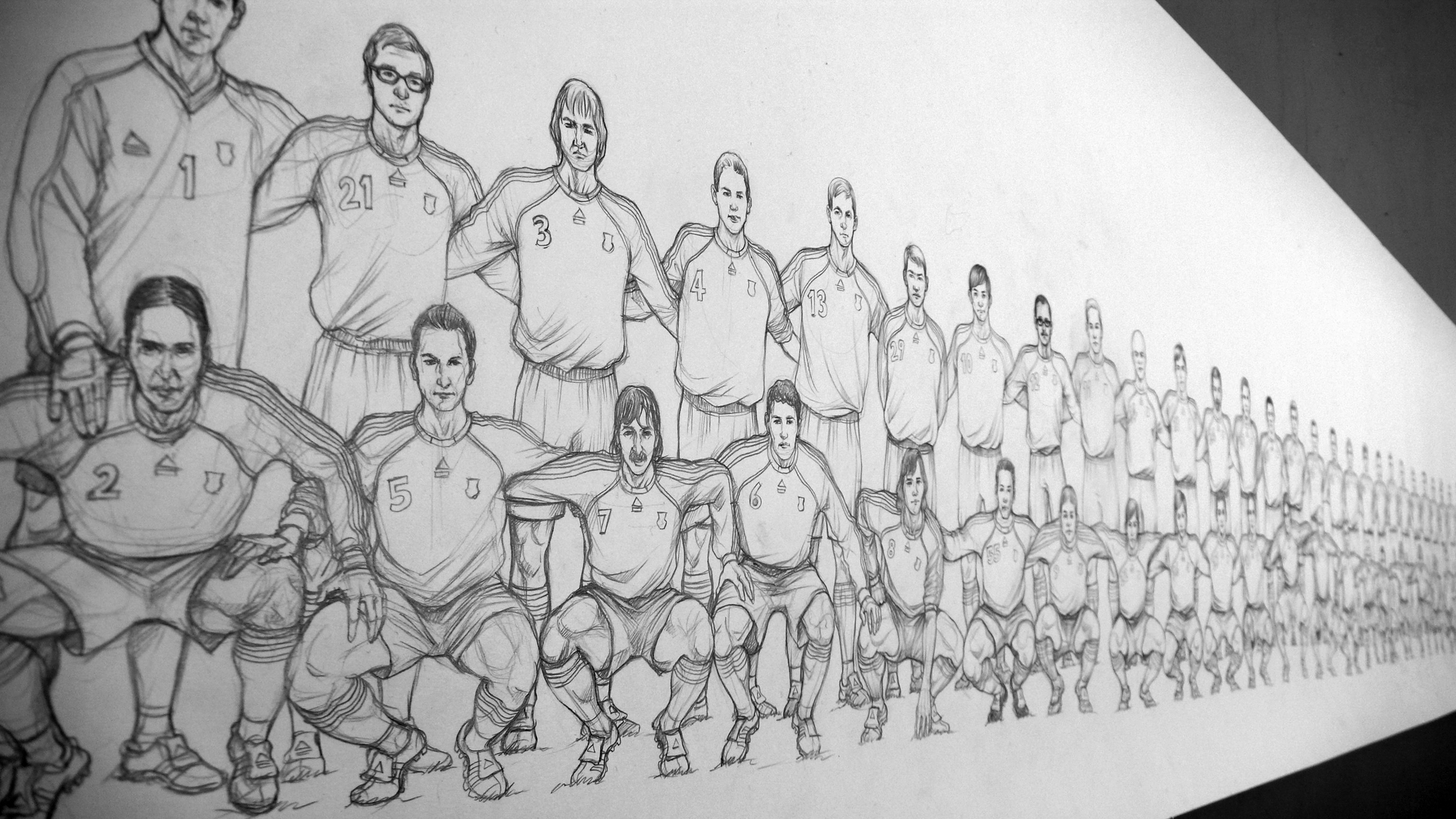
History Otherwise: Ottoman Socialist Hilmi and Ottoman Women’s Rights Defender Nuriye
2019
dimensions: 3.50 m x 6.43m
Digital anamorphic painting
courtesy by the artist
Commissioned by Art Encounters Biennial
Supported by SAHA
view from Weserburg Museum of Modern Art
2019
dimensions: 3.50 m x 6.43m
Digital anamorphic painting
courtesy by the artist
Commissioned by Art Encounters Biennial
Supported by SAHA
view from Weserburg Museum of Modern Art
History Otherwise: Ottoman Socialist Hilmi and Ottoman Women’s Rights Defender Nuriye
History Otherwise: Ottoman Socialist Hilmi and Ottoman Women’s Rights Defender Nuriye shows an Ottoman-style living room situated within an archaeological excavation site. Inside the room are Hüseyin Hilmi Bey (1885-1922) and Nuriye Ulviye Mevlan Civelek (1893-1964). Nuriye Ulviye Hanım was the founder of the Ottoman Society for the Defense of Women's Rights (1913) and the owner of the society’s publication Kadınlar Dünyası [Women’s World] (1913-1921). Kadınlar Dünyası, whose staff consisted solely of women, was the only radical feminist publication of the time, producing content on women’s participation and rights in politics, education, and the workforce.
Hüseyin Hilmi Bey, also known as İştirakçi Hilmi, was one of the early socialists with liberal views and the founder of the Ottoman Socialist Party in 1910 and the Turkish Socialist Party in 1919. In 1910, Hilmi and Baha Tevfik published İştirak, the official publication of the Ottoman Socialist Party, and the magazine was released twenty issues. İştirak covered topics such as the protection of fundamental rights and freedoms, the problems of peasants, and news from around the world.
Merve Elveren
View from Wei-Ling Contemporary, Kuala Lumpur Malaysia
View from Wei-Ling Contemporary, Kuala Lumpur Malaysia
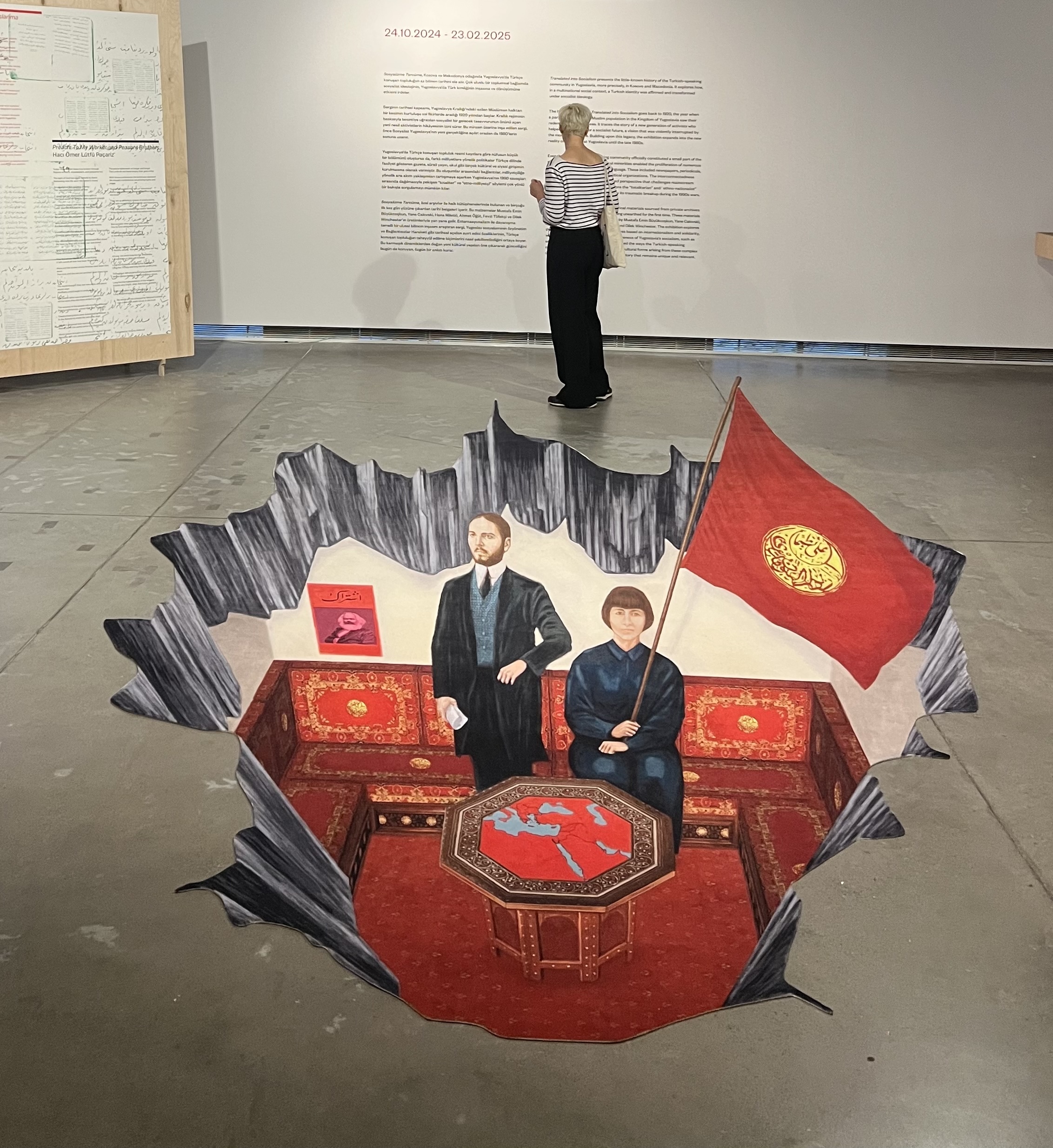
View from SALT Galata Istanbul
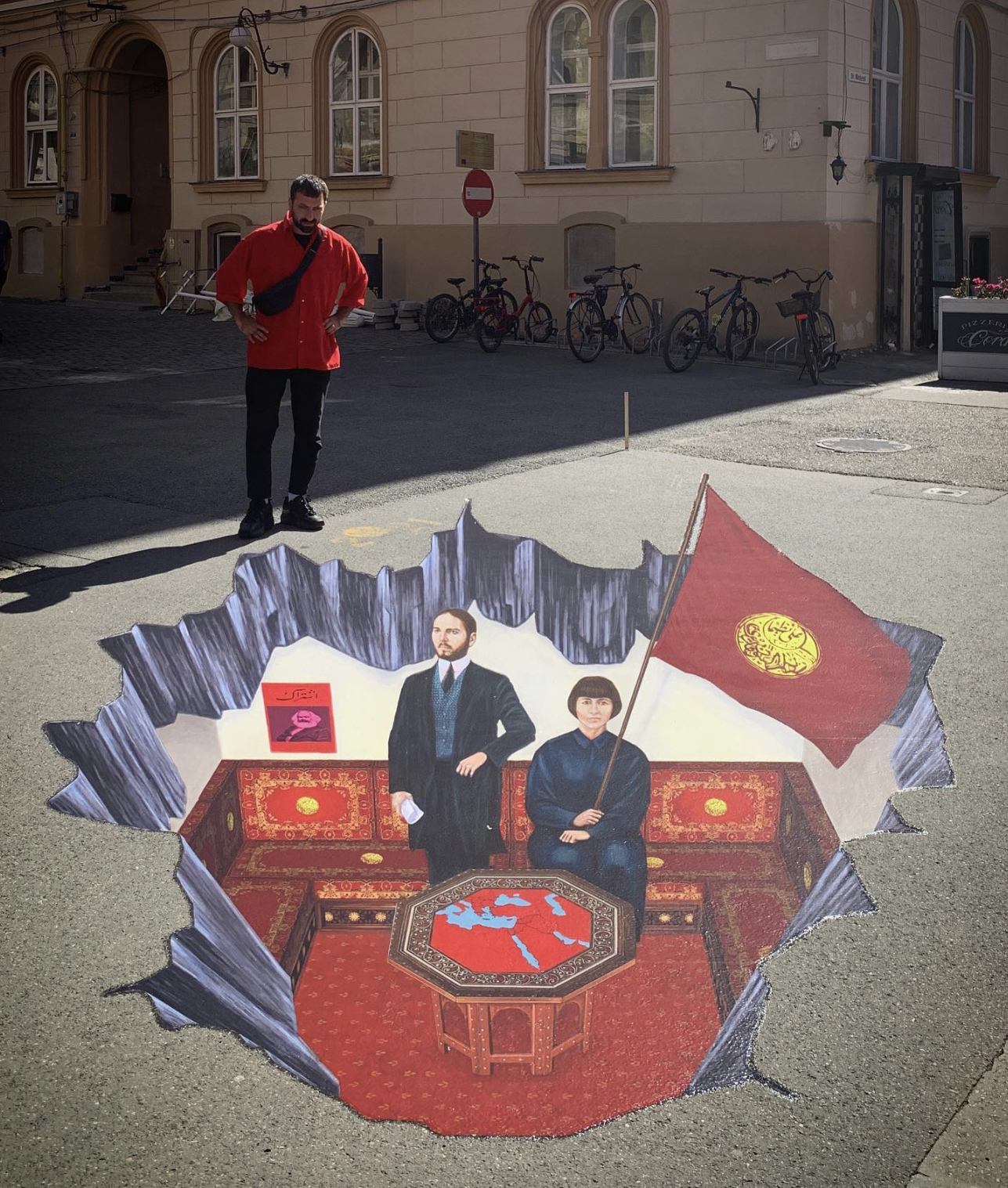
view from Art Encounters Biennial






